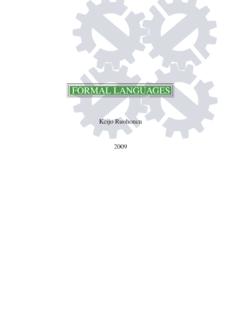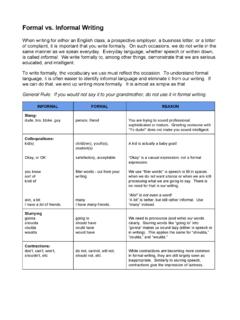Transcription of Uses of Formal & Informal Assessments of ELLs
1 Uses of Formal and Informal Assessments 1 Uses of Formal and Informal Assessments of English language Learners in a language Experience Class, School Year 2007-2008 Joel R. Montgomery, EdD University of Phoenix This working paper was originally created to meet the requirements of a graduate education class at the University of Phoenix. It was originally published on June 19, 2008. Copyright is retained by the author. Uses of Formal and Informal Assessments 2 Uses of Formal and Informal Assessments of ells in a language Experience Class, School Year 2007-2008 This paper will compare the uses of selected Formal and Informal Assessments of English language learners ( ells ) in the language Experience class [TRANSLANGEXP7(&8)-008] at Kimball Middle School, Illinois School District U-46, Elgin, Illinois, during school year 2007-2008.
2 See figure 1 (page 14) for a graphic display of these Assessments and their use. Results from using these Assessments over the year will be reviewed. The paper will conclude with recommendations for the 2008-2009 school year. Purpose of the Class The language Experience class is designed to be an intervention class for seventh and eighth grade ells who are working at English language Learning level 3 (ELL 3) (developing). Students are placed in this level based on district standards established in conjunction with measures developed by the World-Class Instructional Design and assessment (WIDA) Consortium (2008). Native English speakers and ells who have either exited or refused participation in the ELL program at Kimball Middle School move through a series of six-week exploration classes on a rotation schedule. ELL students are assigned to year-long intervention classes.
3 ELL 1 and 2 students participate in Spanish language Arts classes. ELL 3 students go to the language Experience class. ELL 4 students go to a different computer-based intervention class. This class is conducted in one of the two computer labs at Kimball Middle School. The purpose of the class is for students to work with English, improving essential skills in English proficiency and content, while engaging in a variety of computer-based activities. Because most of our ELL students do not have access to computers or the Internet outside of school, the class Uses of Formal and Informal Assessments 3 is designed for students to complete their work in class on the school s computers. Those who can find access outside of school, , at the public library, are encouraged to do so. Because students come to the class with a variety of skill gaps, the course consists primarily of individualized instruction using computer software and projects designed to build skills and to promote engagement in learning.
4 Once skills have been built to a baseline, some team activities and projects are introduced, though the primary tool for reading and engaging in the learning in this class is by way of the computer. Students may enter or leave the class based on changes in their English proficiency level. This year, several students entered at various points during the year and no one exited because of a change in English proficiency. Formal assessment Illinois School District U-46 (U-46) has adopted the Measures of Academic Progress (MAP) tests published by the Northwest Evaluation Association (NWEA). MAP is used in all schools and has been very helpful to teachers in determining how well students are mastering skills and understanding concepts (2008). According to the NWEA, MAP tests are state-aligned computerized adaptive tests that accurately reflect the instructional level of each student and measure growth over time (2008a).
5 One of the reasons U-46 adopted the MAP tests was because of the correlation between growth in MAP test results and improved outcomes on the Illinois State Achievement Tests (ISATs). Students are measured for yearly progress on the ISATs. Because the results of the ISATs are not published in a way to impact instruction throughout the year, the ISATs and preparation activities for the ISATs are specifically excluded from this paper. Uses of Formal and Informal Assessments 4 Frequency and Use of MAP Tests ELL students in the language Experience class were tested three times during calendar year 2007-2008, in September, 2007 (referred to by NWEA as the Fall test window), in January, 2008 (referred to by NWEA as the Winter test window), and in May, 2008 (referred to by NWEA as the Spring test window). Students were tested on two MAP measures, the Math Spanish Sounds Survey with Goals 6+ and the Reading Survey with Goals 6+ IL Ver 2.
6 Scores are reported in terms of Rasch Units (RITs) (NWEA, 2008b). All test items are placed on the RIT scale according to their level of difficulty. Each increasing RIT is assigned a numeric value (RIT score) that indicates a higher level of difficulty. MAP tests are adaptive in that, as a student takes a test, he or she is presented with items of varying levels of difficulty. Once the MAP system determines the difficulty level at which the student is performing, the system collects enough data to report on the student s abilities and the test ends. The student is assigned an overall RIT score. In surveys with goals tests, students also receive RIT range scores for the goal strand components. The normal ranges for RIT scores will fall between 140 and 300. Each score is at an equal distance from each other score so that the RIT scores can serve as a meter stick against which progress can be measured.
7 The distance between 140 and 160, for example, is the same distance as between 220 and 240 (NWEA, 2008b). MAP tests used by the district have written questions in English. Newcomers (ELL 1 students) took the math test in the Fall and did not begin the reading test until Spring. Uses of Formal and Informal Assessments 5 Informal Assessments The purpose of using these Informal Assessments was to stimulate and to measure engagement in learning activity by the students. Emphasis was continually placed on mastery learning more than ability learning. Research indicates that frequent positive feedback and evaluation influences learning and increases the level of positive engagement in learning activity (Butler, 2006). MAP Feedback and Compass Learning In addition to providing immediate feedback on the results of the tests, NWEA also offers specific breakdowns of suggested gap-filling curriculum based on separate goal strand RITS.
8 (This is not available for the math tests taken by the students in the language Experience class.) Compass Learning Odyssey (2008) is an NWEA partner with specific on-line interactive learning programming designed to create specific assignments for learners based on their MAP scores and RITS for separate strands. U-46 conducted a pilot of this software this year and six students in the language Experience class actually worked with the software in January and February, 2008. The software had a series of Informal Assessments and reports built-in that teachers could access at any point. The reports would tell the teacher how much time a student had actually invested in a task, what days he signed-on to the program, how many tasks he had completed so far. Teachers could design tasks to be self-reinforcing, , if a student failed to reach a pre-set benchmark, he would recycle to an earlier point and review (re-do) the assignments.
9 Uses of Formal and Informal Assessments 6 Skills Tutor U-46 provided site licenses to selected Skills Tutor learning modules. Skills tutor (which students see as MySkillsTutor on their computer) contains over 1600 basic skills and thinking skills lessons focus on the fundamentals of learning. Quizzes and tests quickly identify skill deficiencies and prescribe appropriate lessons. Students feel comfortable practicing skills in an engaging environment similar to standardized tests (Achievement Tech, 2008). Students completed a series of mastery projects set-up by the teacher. Students earned 100 class points for each project mastered at 90% or better. Students received immediate feedback from the program and could re-do all sections except for pre-tests (which are not included in the mastery requirement). Students progressed at their own pace and reports were instantly available for the teacher to observe how students are working and areas in which they are challenged.
10 Additional incentives were provided as students began to achieve mastery in one or more projects they could use earphones and listen to music as they worked once they had three projects completed at 90% or better. Three initial projects were set for all students: Using maps, charts, and graphs; using dictionaries and books; and using references. Eighth graders were assigned one additional project for their baseline: Using consumer information. A Skills Tutor Lesson Alignment chart was provided by Achievement Tech for MAP RIT scores in math and reading. Beyond these initial mastery projects, students engaged with lesson modules designed to build skills in math and reading. Kids College and Kids College Contests and Workbooks U-46 secured site licenses for an interactive learning program offered by Learning through Sports (2008) called Kids College.










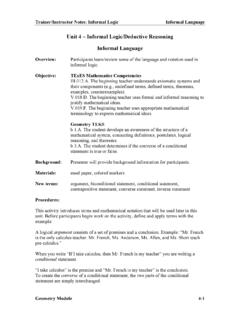
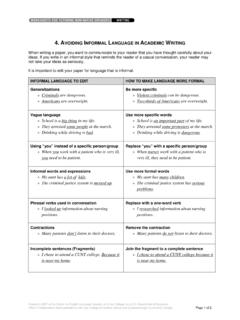
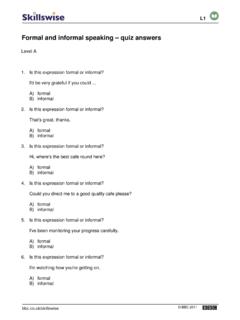
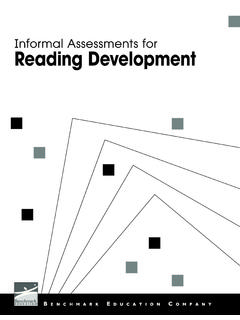
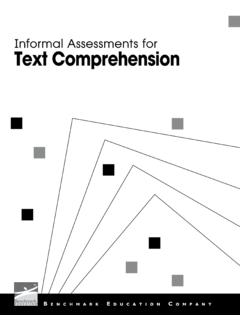
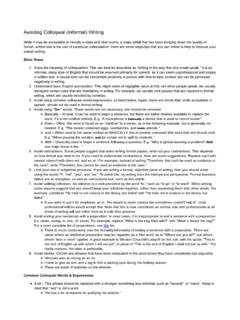
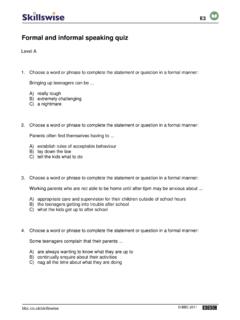
![Formal and Informal Essays[1] - OpenStudy](/cache/preview/5/2/f/9/6/a/b/d/thumb-52f96abd94d259826824a181c6312ef5.jpg)
